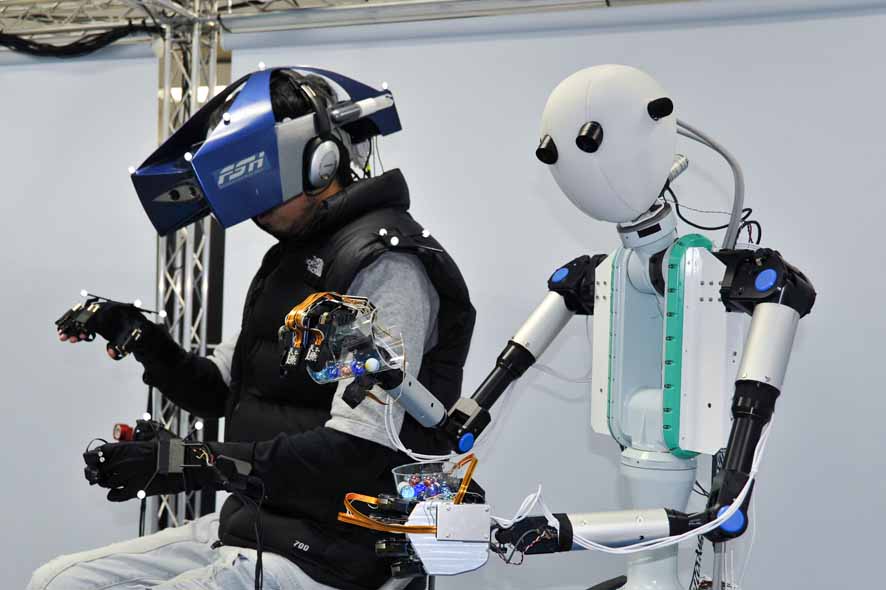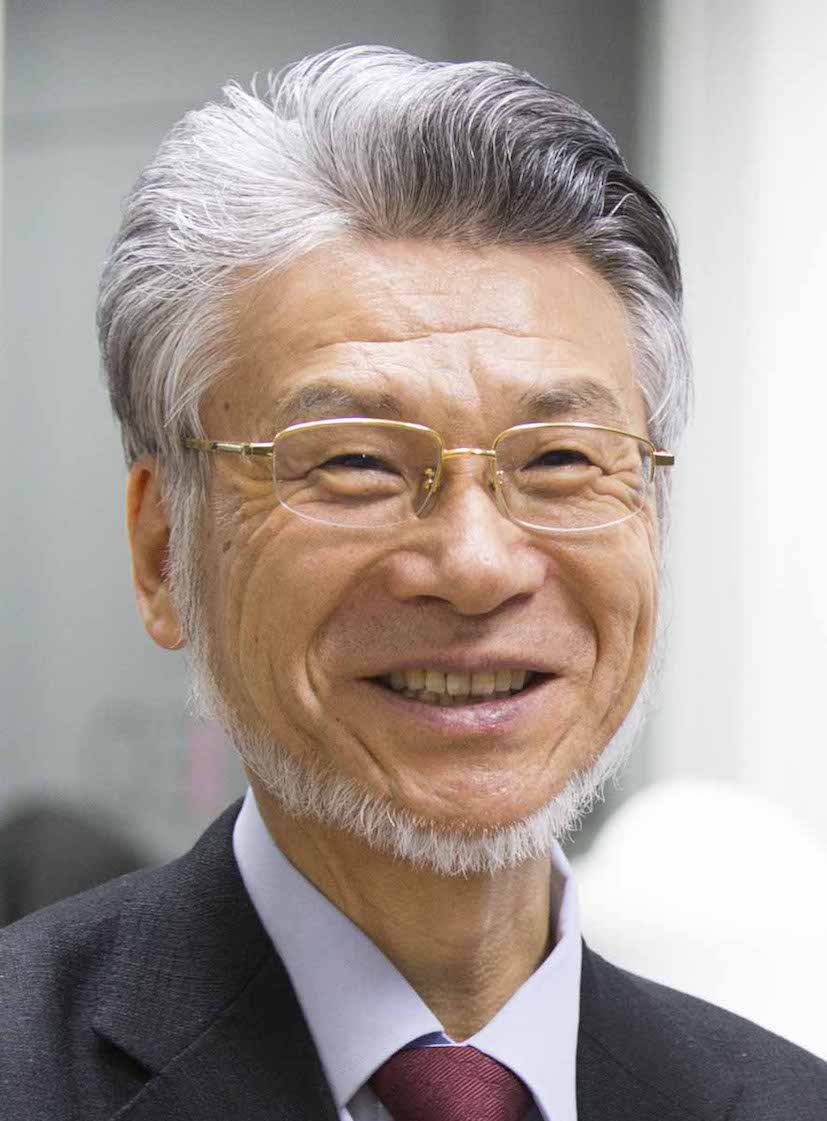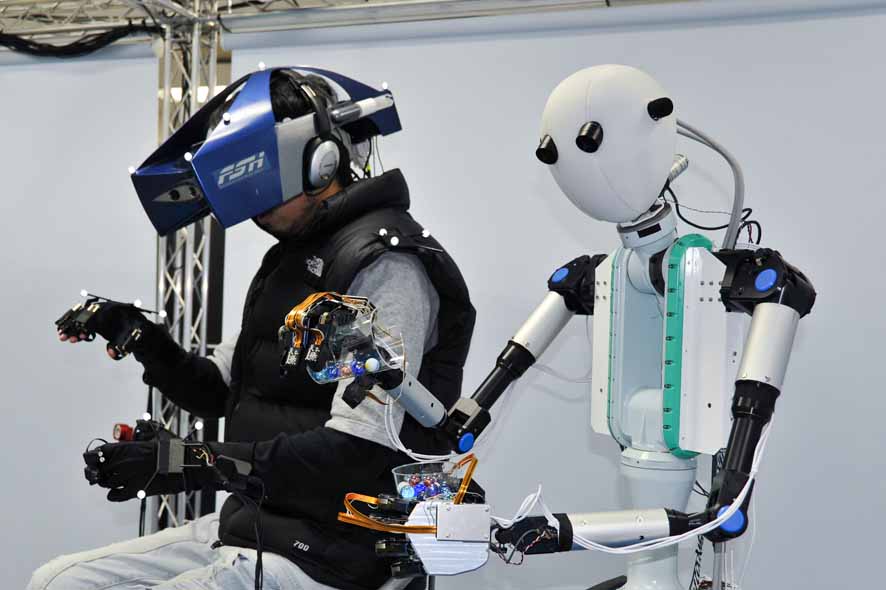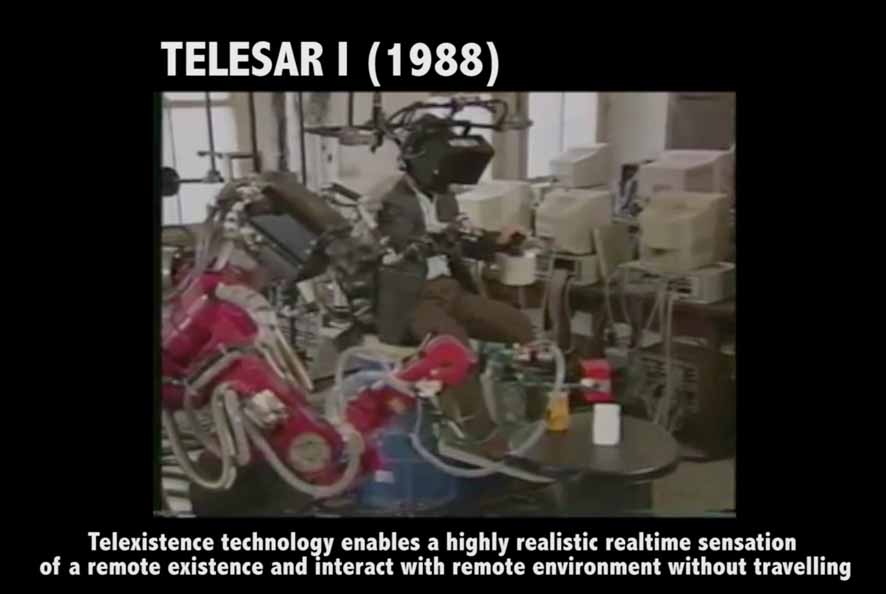Inter BEE 2018 Digital Content Expo keynote speech: The current state and future of telexistence, which is changing society and the way we live - Avatar robot Model H to make an appearance, demonstrating space-time teleportation
2018.11.8 UP


"Rather than moving matter, we're moving functionality," says Tokyo University professor emeritus Susumu Tachi
What if you could be in one place, while having the experience of being somewhere completely different? What if you could complete your work tasks at the office, despite not being able to leave home because you're busy caring for kids or elderly parents? While it may seem like the stuff of dreams, a new technology called telexistence makes this possible by projecting your movements through a robot, enabling you to teleport through space and time.
The keynote speech at the Digital Content Expo, jointly sponsored by Inter BEE 2018 (together with the Digital Content Association of Japan) will see telexistence proponent and Tokyo University professor emeritus Susumu Tachi take to the stage to speak about the current state of telexistence, as well as the space-time teleporation industry and the challenges of a telexistence based society. The keynote speech will explore the potential of telexistence to change society and our lives.
Telexistence, which is quickly becoming a reality, and its power
Telexistence, which professor Tachi has been advocating for since 1980, is, in simple terms, remotely controlling robot avatars in order to expand the possibilities of human experience. The robot is remotely controlled via the person's movements, while the visual, auditory, and tactile sensory input from the robot is relayed back to the person controlling it. The person can have the experience of freely controlling the robot within its environment from a remote location. Now, forty years since the idea was first proposed, "Finally we are at a stage where rapid advances in robotics, communications, networking, and virtual reality technologies have opened up the possibility of this becoming a reality," says Tachi.
The keynote speech will not only explain the history and technology behind telexistence, but how it may affect society and our lives. Tachi explains, "The implementation of telexistence technologies will create a new space-time teleportation industry. By 'inhabiting' telexistence robots, people will be able to have experiences and complete work tasks at a location as if they had teleported there. I am working to promote the development of a this new industry and the creation of a telexistence based society."
Such a telexistence based society could open up new possibilities through "teleportation." There are numerous applications for this technology: people unable to leave home due to child or elderly care obligations could fulfill their duties in the workplace via robots, reducing worker shortages; workers could control robots in other countries via the internet in order to take advantage of time differences; doctors could be dispatched to small villages without resident doctors via robots; and dangerous work could be carried out safely from remote control centers. Of course, telexistence could also enable people to inhabit robots and roam the streets of Paris, London, or New York from the comfort of their own homes. People with disabilities could enter new robot bodies, enabling them to enjoy a wide range of experiences—whether that be travel or hobbies—and thereby participate more actively in society.
Telexistence robot Model H to take to the stage
The robot Model H, developed by Telexistence Inc., a company promoting the commercialization of telexistence, is also scheduled to make an appearance in the keynote speech. Professor Tachi has previously worked on development of the humanoid robot Telesar, and with the latest model Telesar V, succeeded in enabling not only audiovisual telexistence, but also tactile telexistence. The Model H expands on these technological advances, but is designed for commercial use. The robot will be taking to the stage with Tachi to speak, allowing the audience to see what telexistence—which can be difficult to imagine—actually looks like in practice, and what it is capable of. You won't want to miss this rare opportunity!
Tachi explains, "We'll be showing how telexistence has been developed so far, as well as what its technical capabilities and limitations are. I would love for the audience members to think about the potential societal applications for this technology in their various fields of expertise. I want people to realize that telexistence does not mean a society where machines and artificial intelligence steal peoples' jobs, but one where people form the central core of society." The technology necessary for the implementation of telexistence is already here. In order to work towards a society where this technology is widely adopted, we hope to form connections with the experiences and ideas of audience members considering the diverse practical applications of this technology.









